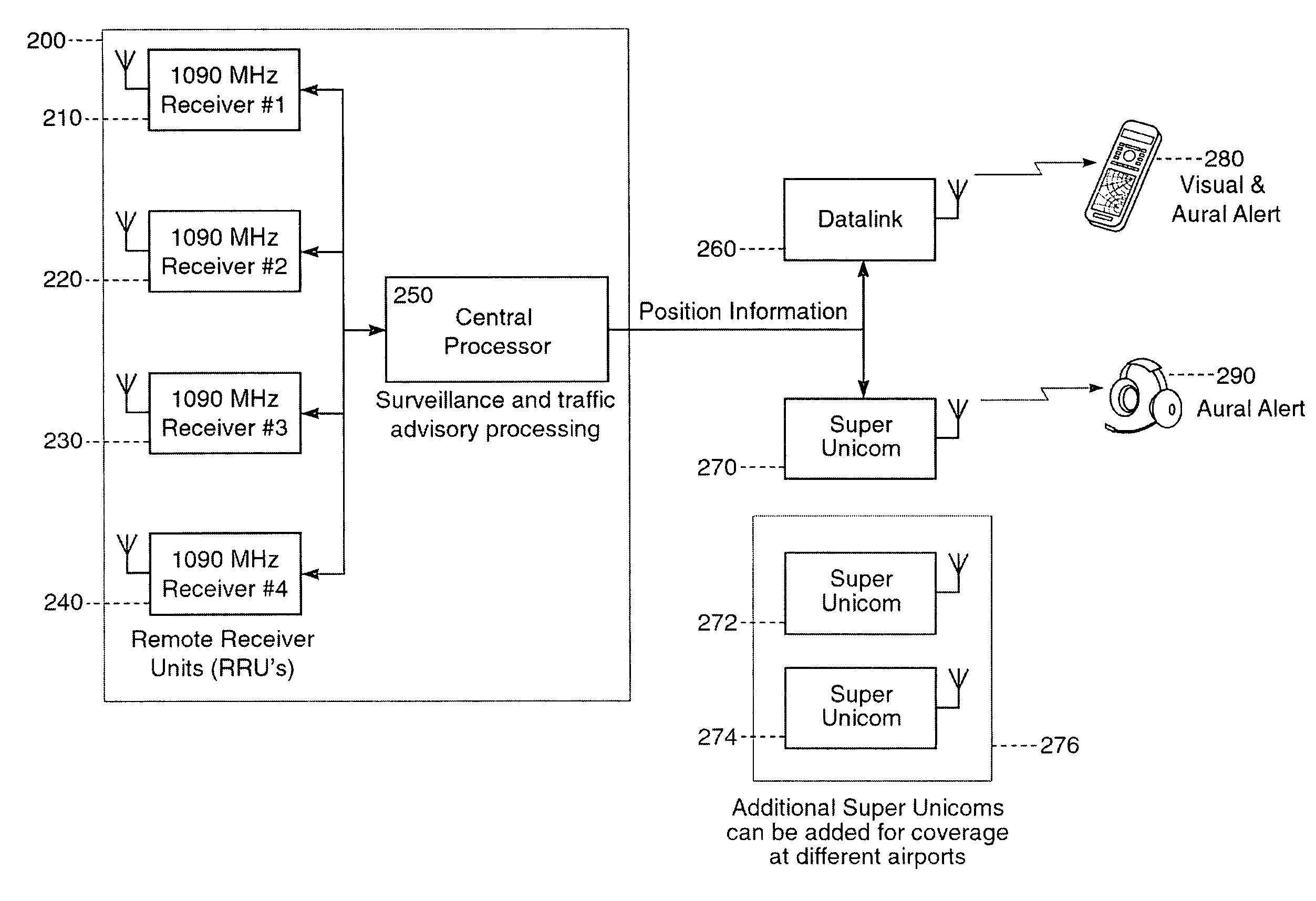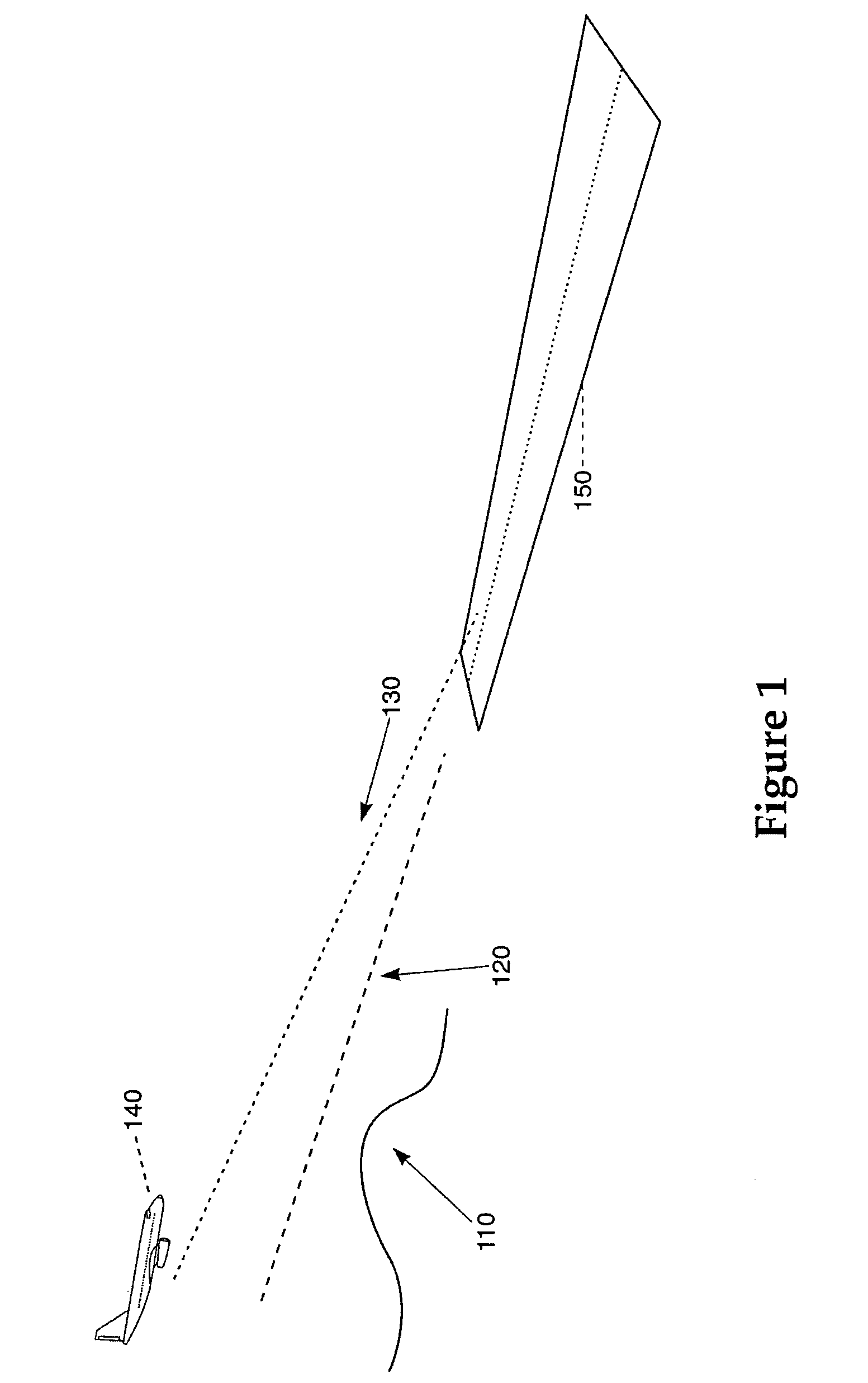Minimum safe altitude warning
- Summary
- Abstract
- Description
- Claims
- Application Information
AI Technical Summary
Benefits of technology
Problems solved by technology
Method used
Image
Examples
Embodiment Construction
[0031]FIG. 1 is a diagram illustrating the approach path of an airplane to a runway, showing the minimum save altitude level relative to terrain. Aircraft 140 is on final approach to runway 150 taking approach path 130. Terrain 110 may include obstacles such as mountains, towers, buildings or the like. In order to prevent a controlled flight into terrain (CFIT) accident, a minimum safe altitude profile 120 may be established for each airport, according to FAA records and other information. In Prior Art on-board systems, this minimum safe altitude profile 120 may be stored in a database and a warning sounded if aircraft 140 drops below this minimum safe altitude at any time while on approach 130.
[0032]FIG. 2 is a block diagram illustrating the major components of the apparatus of the present invention. Unlike the Prior Art, which relies upon on-board solutions, the present invention may track aircraft 140 using a 2 or 3-dimensional multilateration, which may track the aircraft as it ...
PUM
 Login to View More
Login to View More Abstract
Description
Claims
Application Information
 Login to View More
Login to View More - R&D
- Intellectual Property
- Life Sciences
- Materials
- Tech Scout
- Unparalleled Data Quality
- Higher Quality Content
- 60% Fewer Hallucinations
Browse by: Latest US Patents, China's latest patents, Technical Efficacy Thesaurus, Application Domain, Technology Topic, Popular Technical Reports.
© 2025 PatSnap. All rights reserved.Legal|Privacy policy|Modern Slavery Act Transparency Statement|Sitemap|About US| Contact US: help@patsnap.com



